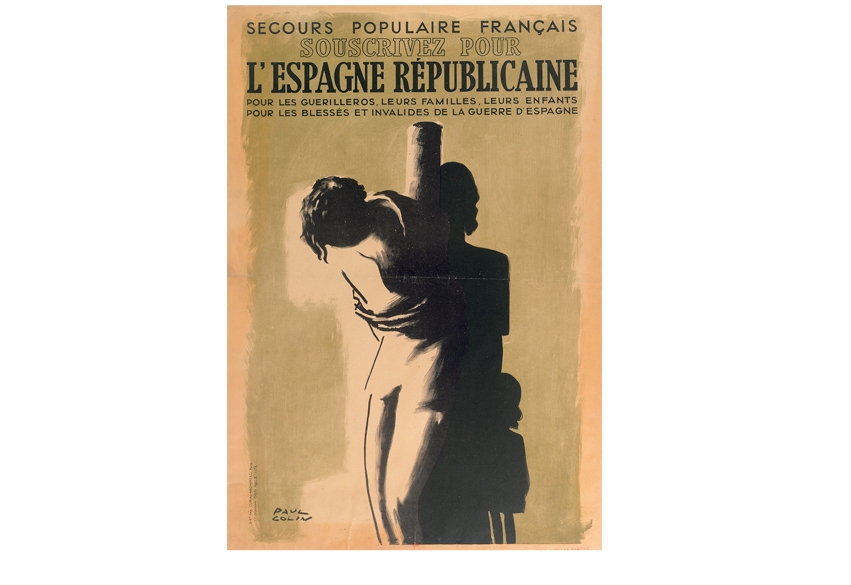The Spanish Holocaust is a book that will give readers nightmares: it gave me two in a single night. Even people who think they have read enough about the Spanish Civil War to feel inured to its horrors will still be appalled by the intensity of the cruelty and repression here revealed.
‘Of the folly and wickedness of the military rising’, wrote Gerald Brenan in The Spanish Labyrinth, ‘there can today be no two opinions.’ Nor today, more than 60 years after he wrote those words, can there be two opinions about the sadistic and merciless repression planned and perpetrated by General Franco and his conspirators. Reading Paul Preston’s narrative is like watching a Spanish Schindler’s List without a Spanish Schindler.
Francoist propaganda at the time led Winston Churchill and many other people to believe that the atrocities carried out by the Republicans were very much greater than those committed by the Nationalist rebels. Later, during the dictatorship, it was generally deemed that the nastiness on either side had been roughly equivalent. Only in democratic Spain, with the end of censorship and the opening up of archives and mass graves, have Spanish historians been able to provide us with the truth: that the Right killed about three times as many people as the Left. It is upon their research that Preston has based his meticulously compiled account.
The rebels claimed for propaganda purposes that they had risen to save Spain from communists (of whom there were very few in the country in 1936) and anarchists (of whom there were many). Yet their enemies — and future victims — also included socialists, regionalists, Jews, freemasons, moderate Republicans and even liberals. That is why in captured villages, teachers, lawyers and mayors were targeted and executed as ferociously as anarchist militiamen. When Preston (perhaps unwisely) uses the word ‘holocaust’ in his title, he is not suggesting genocide, the eradication of a people, but the extermination of a regime, its supporters and its culture. The fact that Franco was still executing thousands of people years after the war demonstrates that he was fighting not merely for military victory but for the destruction of what he and his supporters called Anti-Spain — or what for others was the Spain of the Enlightenment, the Spain of the Liberals and the Spain of the 20th century.
For the Nationalists True Spain was based upon the army, the landowners, the Catholic Church, the civil guard, the fascists of the Falange and the Carlists from Navarre. Awareness of their numerical inferiority in the country simply fuelled their hatred and ruthlessness. The first victims of their rebellion were not subversive anarchists but army officers who hesitated to join them. Colonels or generals who mentioned their oath of loyalty to the Republic were despatched to the firing squad.
Much of the rebels’ early campaigning was directed by landowners from western Andalusia, who formed columns of retainers, civil guards, local Falangists and their señorito sons, youths who knew a good deal about guns, sherry and bull-fighting but not much about anything else. These swept across the provinces of Cádiz and Seville intent on recovering those parts of their estates that had been confiscated and occupied. Mere reoccupation, however, did not satisfy them. One landowner from Córdoba, who bred fighting bulls, returned to his estates and murdered ten villagers for each of his bulls that had been butchered for meat.
The greater part of Franco’s conquests in the autumn of 1936 were carried out by the most ferocious units of the Spanish army: the Moroccan mercenaries, the Africanistas (Spanish troops who had learned their trade in colonial wars) and the Legionarios, whose violent and mindless slogan was Viva la muerte! These raced north from Andalusia through Extremadura to Toledo and Madrid, looting and murdering as they went. Preston catalogues their atrocities village by village in a manner that sends one screaming to the drinks tray: 93 men shot or bayoneted on the capture of such-and-such a pueblo; 147 from the same place executed over the following week before crowds of cheering Francoists drinking coffee and eating churros from improvised stalls; 45 women raped and 17 of them shot, some of them pregnant; a militia girl locked in a room for 50 Moroccans to enjoy before she too is murdered.
The rebel leaders sanctioned and even incited such behaviour in their orders and radio broadcasts. So did priests, who led by example, one of them boasting of killing more than 100 leftists, the sort of score one normally associates with a top Mafia hitman at the end of his career. (This book reminds one, incidentally, that Mussolini and his Fascists, however ghastly, were a lot less bloodthirsty than their Spanish counterparts: sentencing your opponents to confino — internal exile — in the islands and villages of the Italian south is not like lining them up in their hundreds against cemetery walls.)
There were of course many frightful atrocities in those areas the rebels did not capture at the start of the uprising. Victims of the Republicans included several thousand monks and priests, large numbers of army officers and civil guards, and landowners, businessmen and members of right-wing parties. Yet as Preston observes, there are a number of moral differences between the repressive actions of the two sides. Many of the secular dead in the Republican zones were in fact rebels prevented from joining Franco only because the uprising had been defeated in their areas (principally Madrid, Catalonia, New Castile, Asturias and the Basque provinces). Most of them in any case were shot in reprisal for rebel atrocities or bombing raids that had killed dozens of civilians: the infamous massacres at Paracuellos were a consequence of the rebels’ advance to the outskirts of Madrid and General Mola’s boast that a ‘fifth column’ was waiting inside the capital ready to help overthrow the Republic.
Yet the crucial difference is surely that, while the rebel leaders — Franco, Mola and the psychopathic Queipo de Llano — encouraged the atrocities, the principal Republican leaders — the President Azaña, the Prime Minister Negrín, the socialist Prieto — continually tried to prevent unauthorised killings. Broadcasting from exile in Chile at the end of the war, Prieto asked his audience if they could show him ‘a single word of mercy pronounced by the rebels’ and, ‘if there were none from the military rebels, words of mercy from the civilian elements that supported the insurgency’ — and if there none from them either, words of mercy ‘pronounced in public before the bloodthirsty crowds, by a representative of the Catholic church in the Francoist zone’.
Paul Preston, who is biased in his language and feelings but scrupulous in his use of evidence, does find one priest, the Jesuit Father Huidobro, who, although he supported the rebels and became a chaplain to the Legion, asked for mercy and tried to save lives. After he was killed in battle outside Madrid, allegedly by a Russian shell, the Vatican initiated the business of beatification; when it was discovered that one of his own men — fed up with his preaching — had shot Huidobro in the back, the process was shelved.
Franco’s death in 1975 prompted a remarkable reconciliation in Spain. A transition directed by the moderate right and accepted by a very restrained left resulted in a political system that neither ETA nor the army (part of which attempted a half-baked coup in 1981) could destabilise. Both sides of the Civil War had agreed tacitly to ‘draw a line’, to ignore the atrocities and in the interests of harmony to allow many prosperous murderers to remain at large.
This was a matu re decision taken by an immature democracy. Now the situation is altogether different. Secure in their constitutional system, Spaniards want to find out what took place, what happened to that father or grandfather snatched away when they were infants and never seen again. Since historians should not be the servants of politics — even benign politics — Paul Preston was justified in embarking on a study that was obviously very painful for him to write. But those who love Spain should be warned before they read it.






Comments